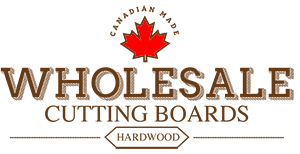Blog
The Future of Wholesale Cutting Boards
Wholesale cutting boards are under the great shift and booming demand from home chefs and professional kitchens across the world. In effect, many new materials, designs, and functionalities are covered in the market of wholesale cutting boards. Let us, delve into some of the main trends and factors that are going to mold the future of wholesale cutting boards: Sustainable and Eco-Friendly Materials.
With more attention being given to sustainable living, the cutting board industry is gradually but surely phasing out wood in favor of greener materials. In further reaction to increased consumer awareness of the ecological footprint of said purchases, demands for cutting board products made from renewable resources are increasing.
Bamboo and Other Rapidly Renewable Resources: Cutting boards are made predominantly from bamboo because the raw material grows very fast, with barely any harm done to the environment.
Reclaimed Wood:
Reclaimed wood is used to make cutting boards, helping save timber and giving a new life to discarded material.
Biodegradable and recyclable materials: Some producers also use biodegradable composites and recyclable plastics as alternative materials for making cutting boards.
Advancements in Manufacturing Technologies
Upgrades in manufacturing technology pave the way for more creative and design-guided designs of cutting boards. These technologies make the strength, functionality, and beauty of a greater cutting board.
Laser-Cutting Techniques: Such laser-cutting techniques allow even the most intricate patterns and designs to be etched on the face of the cutting boards, thereby allowing wholesale crafts buyers their options for customization.
The following are some of the several trends that will characterize new product introductions in this category: New materials and coatings that have inherently anti-bacterial properties contribute to a more secure food preparation environment. Through the use of digital printing technologies, manufacturers can now offer highly personalized cutting boards with logos, graphics, or text made to their customers’ needs.
Growing Demand for Personalized Cutting Boards
This is a growing trend in the wholesale cutting board marketplace: personalization. The more consumers look for products with a difference, the more businesses are answering through offerings that are truly unique in the marketplace—individual, artisanally crafted cutting boards that denote taste and preference.
Custom engravings:
By offering cutting boards with custom engravings—names, dates, special messages—a step further, this will position them appropriately as a gift or special-occasion item for wholesale buyers.
Other than the usual rectangular shape, today one can find cutting boards in many varying shapes and sizes, providing much more personalized variety.
Specialized Cutting Boards:
In fact, as regards cutting boards, there is a trend toward boards especially designed for a specific task to be performed on them, such as carving, chopping, or serving, each board featuring its own distinctive elements for the task.
Design and functional innovations
As consumer needs change, the design and functionality improve on cutting boards. From multi-functionality to aesthetic enhancements—innovation drives the market.
The need for Multi-functional cutting boards – A modern cutting board which serves dual purposes now, like a cutting surface which can be used as servicing trays or those having knife storage to be built within.
High Durability:
Cutting boards made of Canadian maple or walnut can be very resistant to wear and can, therefore, have the ability to serve the customer for a long time.
Integrated Features:
Currently, there exist many cutting boards that integrate features like juice grooves, non-slip edges, or measuring guides to provide the user with further features.
Challenges and Considerations for Wholesale Buyers
While the cutting board market offers many opportunities, it can be quite challenging for a wholesale buyer to navigate in order to penetrate the market.
Cost management:
Quality high grade, advanced manufacturing processes come with a cost of material. Wholesale buyers must achieve a good balance between quality and cost so as to be a competitor in the market.
Supply Chain Stability:
Ensuring that the supply chain is stable is critical when sourcing materials for the products that are either eco-friendly or more specialized. The disruptions might impact inventory and pricing.
Market Saturation:
With so many options currently, and the constant influx of new cutting boards to the market, differentiation becomes a matter of innovation and demonstrable value.
The future of wholesale cutting boards wears a very bright outlook with sustainability, technology, and personalization taking the lead. A business aligned with coming through these trends and primed with the challenges that result from these trends will be best placed to prosper. Wholesale cutting boards, whether it is using the eco-friendly materials, cutting-edge manufacturing techniques, or innovative designs, are sure to be remained in every kitchen globally.
